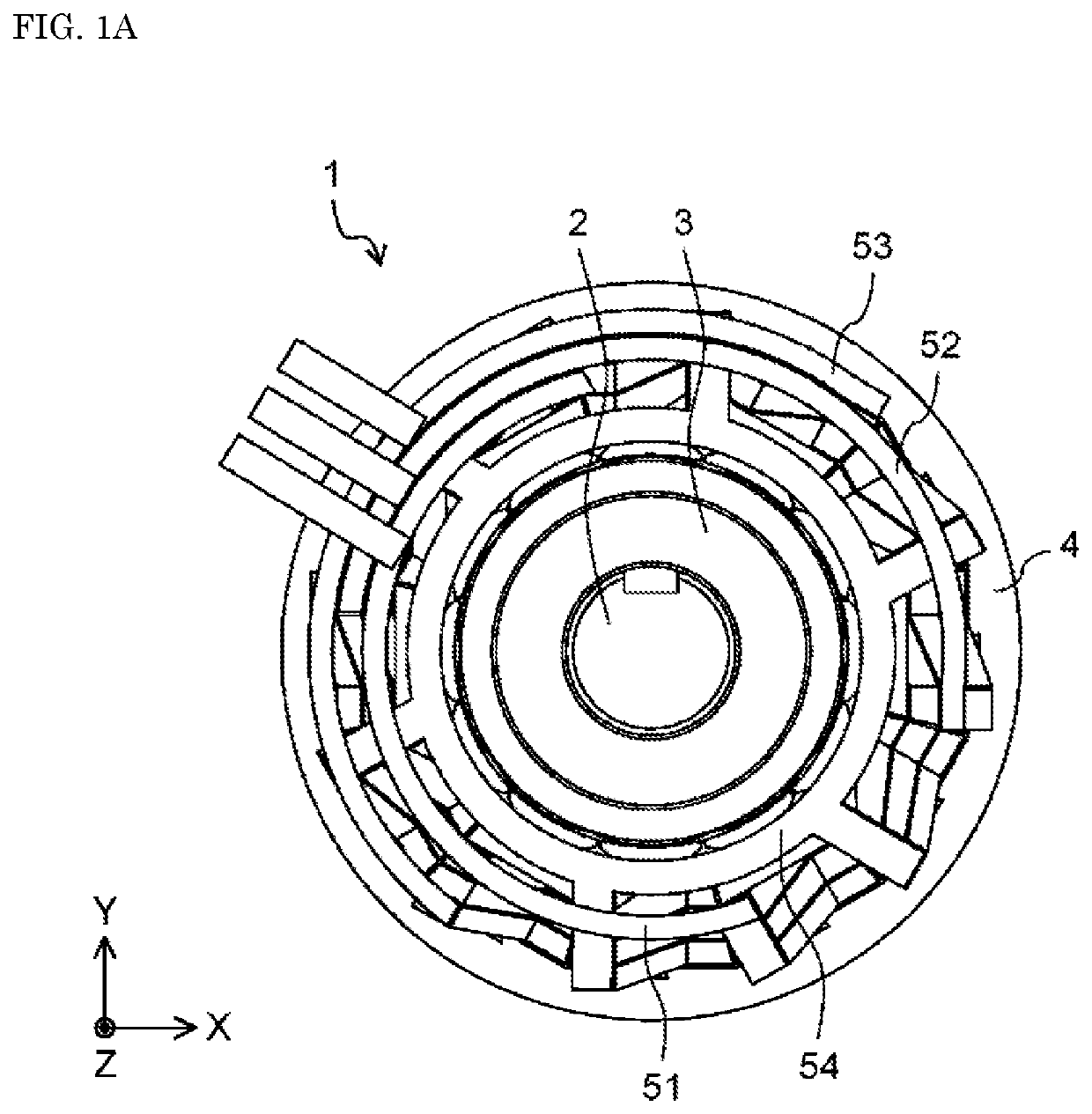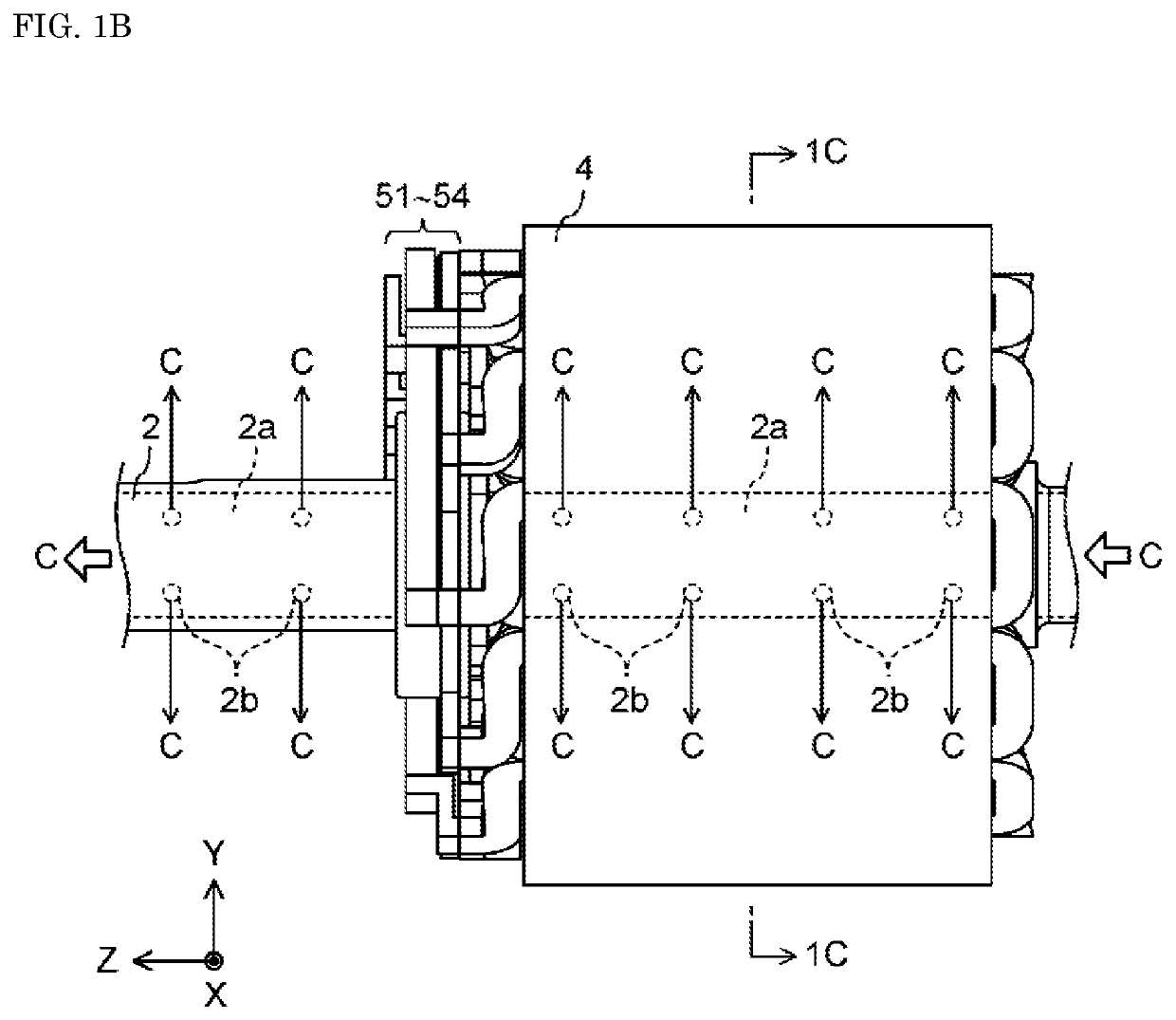Coil and motor using same
- Summary
- Abstract
- Description
- Claims
- Application Information
AI Technical Summary
Benefits of technology
Problems solved by technology
Method used
Image
Examples
first modified example
[0055]FIG. 6 is a perspective view showing coil 5 according to a first modified example. Note that in FIG. 6, lead-out parts 5c, 5d are not shown for the sake of convenience of description.
[0056]The shape of the cross-section of conductive wire 5a is different between coil 5 according to the present modified example and coil 5 shown in FIGS. 2 and 3. In coil 5 shown in FIGS. 2 and 3, the cross-section of conductive wire 5a at each turn has a shape of a skewed rectangle. This shape prevents steps from being formed on the side surfaces of coil 5. On the other hand, in coil 5 shown in FIG. 6, conductive wire 5a at each turn has substantially a rectangular cross-section. Therefore, steps are formed between neighboring turns on the side surfaces of coil 5.
[0057]As shown in FIG. 6, also in the present modified example, in the first turn positioned at the lower end part of the series of turns, owing to first notch 5e, the lower surface of the first turn, which is one outer surface position...
second modified example
[0061]FIG. 7 is a perspective view showing coil 5 according to a second modified example. FIG. 8 is a side view showing coil 5 according to the second modified example. FIG. 8 shows a side surface of coil 5 when viewed from a direction of tip ends of lead-out parts 5c, 5d each provided on each of the first turn and the fifth turn of coil 5.
[0062]Coil 5 according to the present modified example is different from coil 5 shown in FIGS. 2 and 3, and the shapes of the coil sides, at the second turn to the fifth turn, intersecting lead-out part 5c, 5d are different from the shapes of the other coil sides of the second turn to the fifth turn.
[0063]As shown in FIGS. 7 and 8, at the second turn to the fifth turn, each of the coil sides intersecting lead-out parts 5c, 5d is provided with a bent part, which is a deformed part. The bent parts are formed, at the second turn to the fifth turn, by bending conductive wire 5a of the coil sides intersecting lead-out parts 5c, 5d into a step shape. Sp...
third modified example
[0070]FIG. 9 is a perspective view showing coil 5 according to a third modified example. Note that in FIG. 9, lead-out parts 5c, 5d are not shown for the sake of convenience of description.
[0071]Coil 5 according to the present modified example is different from coil 5 shown in FIGS. 2 and 3, and the shape of a part of the coil sides of the first turn of coil 5 is different from the shapes of the other coil sides of the first turn. Similarly, the shape of a part of the coil sides of the fifth turn is different from the shapes of the other coil sides of the fifth turn. That is, a part of the coil sides of the first turn is provided with a deformed part having a shape different from the shapes of the other coil sides of the first turn. A part of the coil sides of the fifth turn is provided with a deformed part having a shape different from the shapes of the other coil sides of the fifth turn.
[0072]In coil 5 shown in FIGS. 2 and 3, the lower surface of coil 5 is constituted by the lower...
PUM
 Login to View More
Login to View More Abstract
Description
Claims
Application Information
 Login to View More
Login to View More - R&D
- Intellectual Property
- Life Sciences
- Materials
- Tech Scout
- Unparalleled Data Quality
- Higher Quality Content
- 60% Fewer Hallucinations
Browse by: Latest US Patents, China's latest patents, Technical Efficacy Thesaurus, Application Domain, Technology Topic, Popular Technical Reports.
© 2025 PatSnap. All rights reserved.Legal|Privacy policy|Modern Slavery Act Transparency Statement|Sitemap|About US| Contact US: help@patsnap.com



